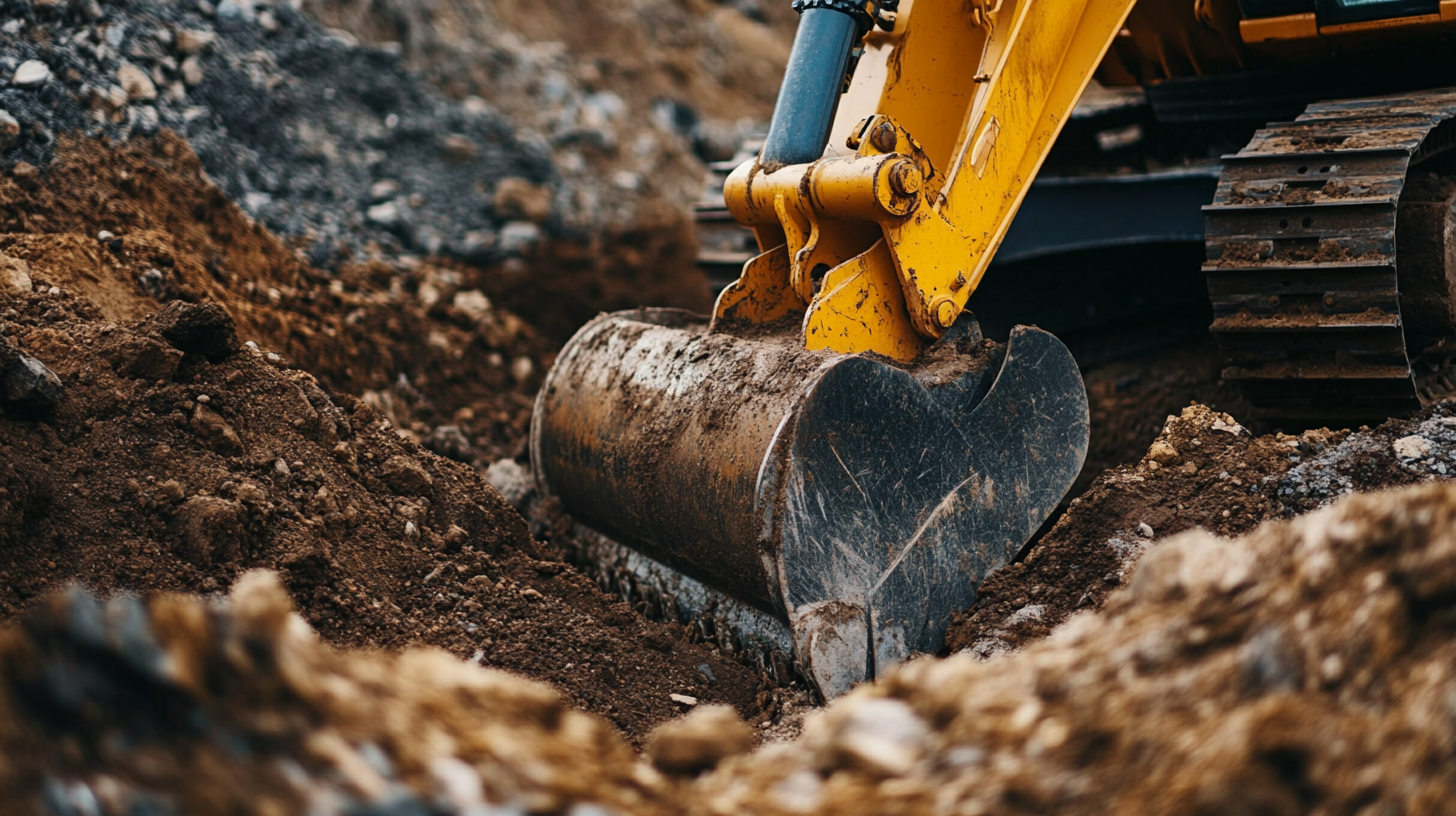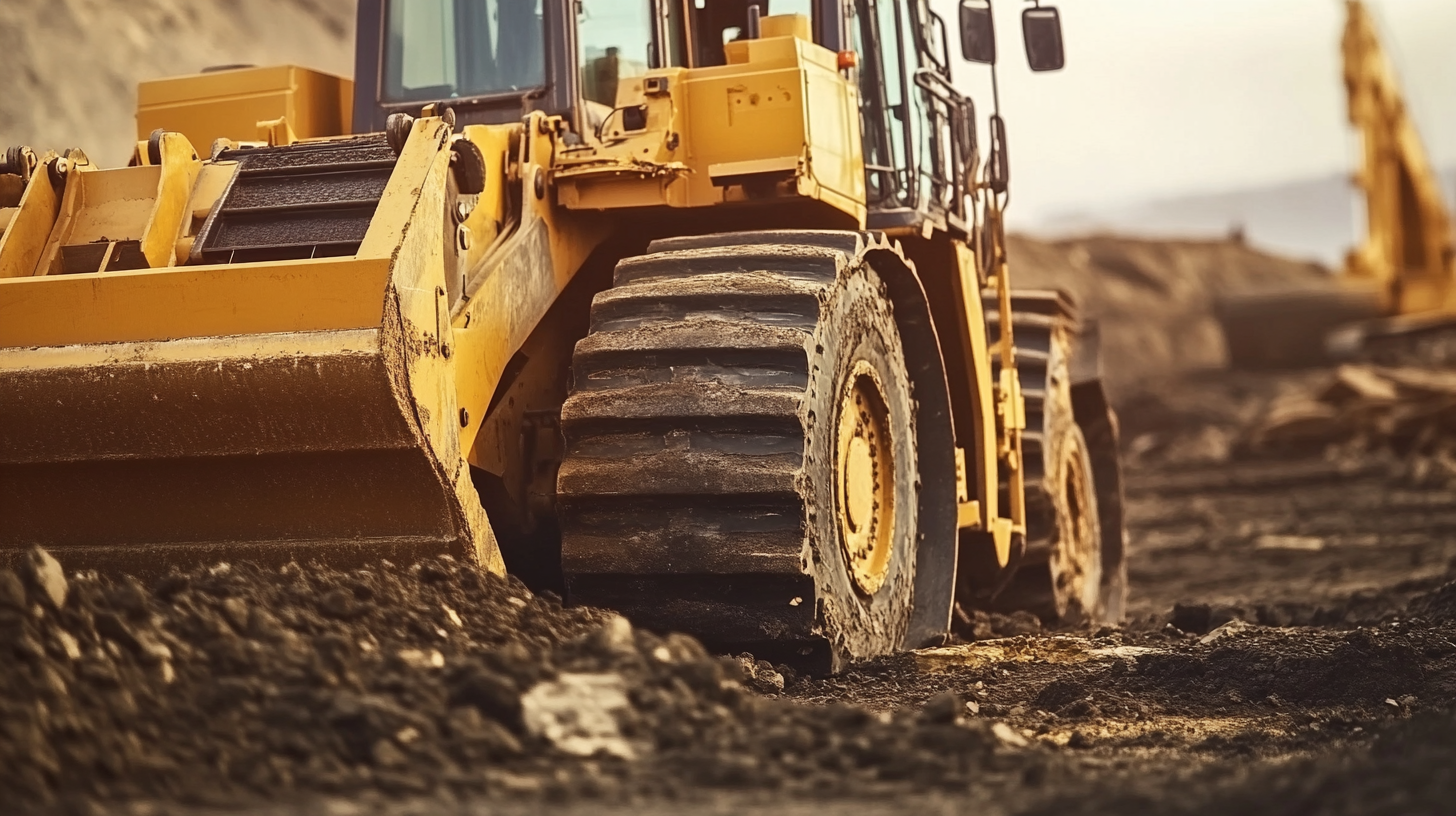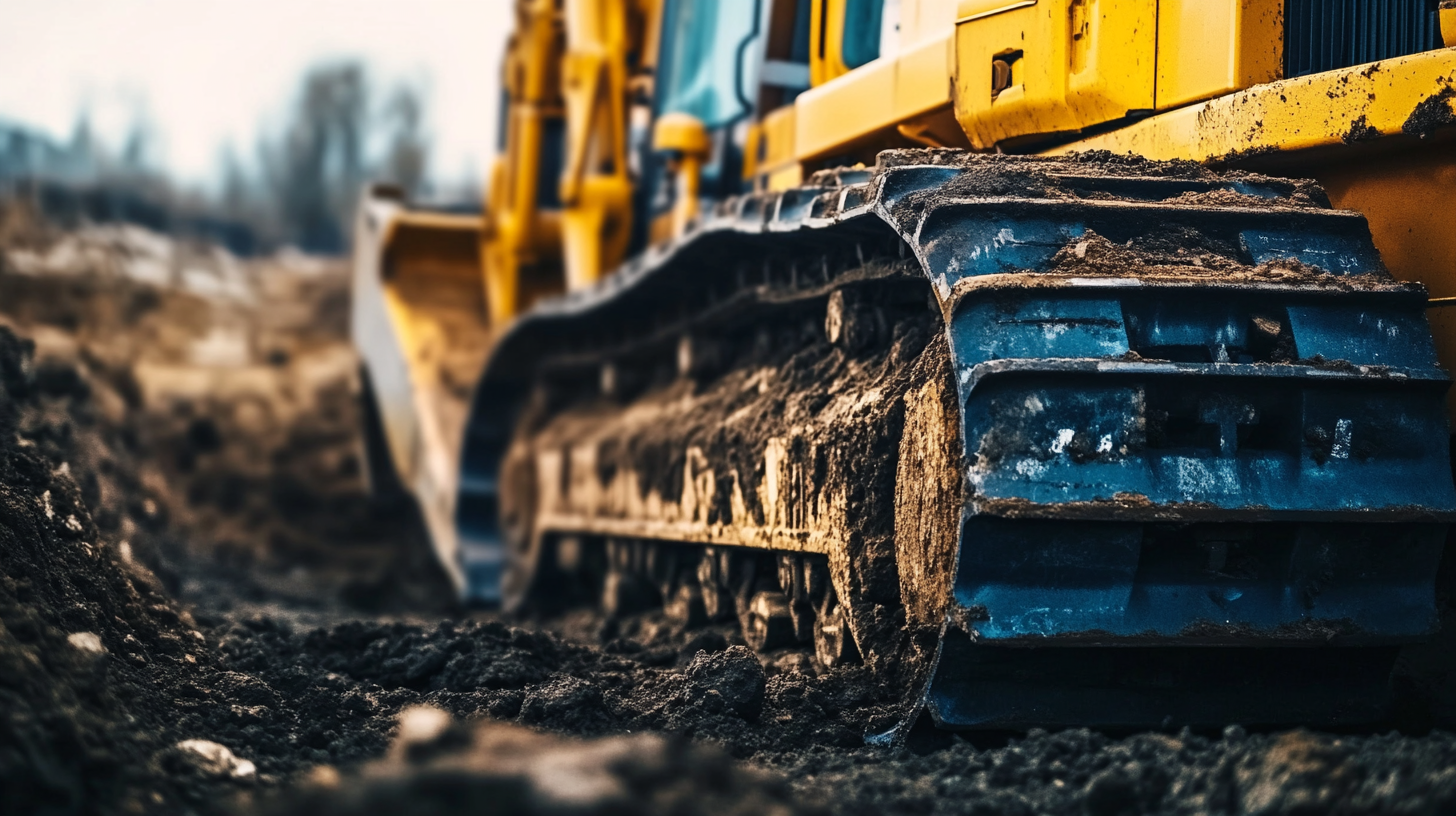
-
Home
-
About Us
-
Products
-
News
-
Blog
-
Contact Us
Leave Your Message

The construction industry is poised for significant transformations by 2025, driven largely by advancements in technology and materials science. As the demand for efficient and sustainable construction practices grows, the importance of optimizing
Construction Machinery Wear Parts becomes paramount. According to a recent report by MarketsandMarkets, the global wear parts market is expected to reach
$98.7 billion by 2025, highlighting the critical role these components play in enhancing the operational efficiency and lifespan of construction equipment.
 With innovations such as additive manufacturing, artificial intelligence in predictive maintenance, and the use of high-performance alloys, the landscape of wear parts is evolving rapidly. This blog explores how these technological advancements will reshape the future of
Construction Machinery Wear Parts, ensuring that industry players remain competitive in an increasingly dynamic market.
With innovations such as additive manufacturing, artificial intelligence in predictive maintenance, and the use of high-performance alloys, the landscape of wear parts is evolving rapidly. This blog explores how these technological advancements will reshape the future of
Construction Machinery Wear Parts, ensuring that industry players remain competitive in an increasingly dynamic market.
The landscape of wear parts manufacturing for construction machinery is poised for a transformative shift by 2025, driven predominantly by advancements in AI and automation. As reported, companies are increasingly harnessing AI technologies to address longstanding challenges such as parts shortages and workforce limitations. For instance, studies suggest that integrating AI within additive manufacturing processes can lead to a reduction in production time by up to 30%, significantly increasing efficiency and responsiveness to market demands.

Moreover, automation techniques are being revolutionized through innovations such as 3D printing and AI-enhanced scanning. Advances in these domains allow manufacturers to produce custom and locally-sourced wear parts at scale, minimizing lead times. Reports indicate that 70% of manufacturers are exploring AI applications to streamline operations by 2025, which underscores the urgency for construction machinery suppliers to adapt. With such technologies taking root, the tie between AI, automation, and wear part production is not just a trend, but a pivotal element of the industry's evolution, promising enhanced sustainability and productivity for the future.
The construction industry is undergoing a significant transformation, particularly in the area of wear parts for machinery. As we head towards 2025, the integration of sustainable materials into construction machinery parts is becoming a focal point for manufacturers and industry stakeholders. The adoption of materials such as recycled metals, bio-based polymers, and innovative composites not only reduces the environmental footprint of machinery production but also enhances the durability and performance of these components.
These sustainable materials are engineered to withstand the rigorous demands of construction operations while offering a lightweight alternative that can improve fuel efficiency and operational efficacy. Moreover, utilizing locally sourced, eco-friendly materials can drastically cut down on transportation emissions and encourage a circular economy within the construction sector. As companies invest in research and development to explore cutting-edge sustainable technologies, the future of construction machinery will not only hinge on performance but also on a commitment to environmental stewardship, making it a crucial aspect of the industry's evolution.
The future of construction machinery wear parts management is increasingly leaning towards predictive maintenance. As technology advances, the ability to anticipate when wear parts will require replacement is transforming the landscape of construction operations. By leveraging data analytics and IoT devices, companies can monitor the real-time performance of machinery, enabling them to identify wear patterns and predict failures before they occur. This proactive approach not only minimizes unexpected downtime but also optimizes maintenance schedules, leading to significant cost savings.
Integrating predictive maintenance into wear parts management also allows for a more sustainable approach to resources. By precisely timing the replacement of wear parts based on actual usage and performance rather than adhering to a fixed schedule, construction companies can reduce waste and extend the life cycle of existing components. This shift not only enhances operational efficiency but also aligns with broader sustainability goals in the construction industry. As we look ahead to 2025, the reliance on predictive maintenance will likely become a standard practice, fundamentally altering how wear parts are managed and paving the way for smarter, more efficient construction operations.

The construction machinery industry is on the brink of a transformation driven by innovative technologies, especially in the realm of customization and 3D printing. According to a report from Market Research Future, the global 3D printing in the construction industry is expected to reach a market value of approximately $1.5 billion by 2025, reflecting a compound annual growth rate (CAGR) of over 20%. This surge indicates a growing acceptance of additive manufacturing techniques to produce wear parts that are tailor-made for specific machinery applications.
Customization through 3D printing not only enhances the performance of construction machinery components but also significantly reduces lead times and material waste. A study by Wohlers Associates highlights that 3D printing can reduce production time for wear parts by up to 70%, aligning with the industry’s critical need for efficiency. Furthermore, the ability to easily modify designs allows manufacturers to respond rapidly to changing market demands, offering parts that meet exact specifications while maintaining high standards of durability. As we move towards 2025, these advancements will redefine how wear parts are conceived, produced, and integrated into construction machinery, ultimately leading to increased operational efficiency and reduced downtime.
As we approach 2025, the landscape for construction machinery wear parts reveals significant challenges and opportunities within global supply chains. Recent trends indicate that industries are experiencing rapid integration, driven by innovation and the need for efficient supply chain solutions. According to the "2024 Medical Device and Supply Chain Annual Innovation White Paper," the medical device sector is anticipated to face hurdles that resonate across various manufacturing domains, highlighting the pressing need for adaptability in supply chains. The construction machinery sector must heed these insights to mitigate potential disruptions in sourcing essential wear parts.
Moreover, the semiconductor industry is projected to see substantial growth, bolstered by the rising demands for artificial intelligence and high-performance computing applications. This is particularly relevant for the construction machinery sector, where technology integration can enhance productivity and cost-effectiveness. In light of current geopolitical tensions and evolving trade policies, companies must prioritize resilience and innovation in their global supply chains. The emerging data shows that the growth of the machinery market is linked to how well manufacturers can navigate these complexities while ensuring a reliable supply of high-quality wear parts to meet evolving industry standards.
| Dimension | Current Status (2023) | Predicted Trends (2025) | Challenges | Opportunities |
|---|---|---|---|---|
| Market Demand | Stable growth in global markets | Increased demand for sustainable solutions | Economic fluctuations | Expansion into emerging markets |
| Technological Integration | Limited use of AI and IoT | Widespread adoption of smart technologies | High implementation costs | Improved efficiency and reduced downtime |
| Supply Chain Reliability | Vulnerable to disruptions | Improved resilience through diversification | Global logistics challenges | Leverage local suppliers |
| Sustainability Practices | Limited recycling and reuse | Focus on eco-friendly materials | Regulatory compliance | Innovation in biodegradable materials |
| Skilled Workforce | Shortage of qualified personnel | Increased training programs | Competition for talent | Upskilling opportunities in tech |